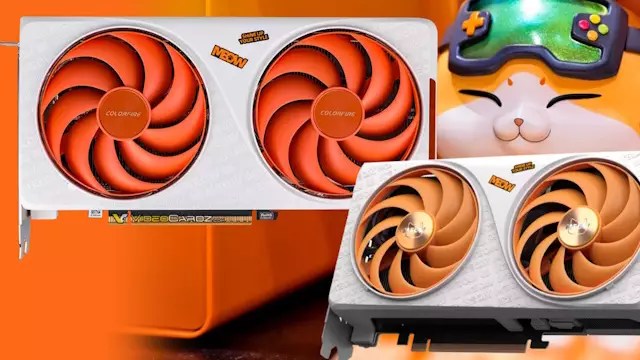Amid the endless swirl of GPU releases and technological advancement, it’s always refreshing to come across a product that not only aims to perform but also dazzles in design. The latest offerings by Colorful, notably the Colorfire Meow and iGame Ultra RTX 5050 series, have sparked a mix of excitement and perplexity in the tech community. While the eye-searing bright orange of the Colorfire Meow is unmistakably audacious, it begs the question—why is Colorful launching two distinct lines in the same category? As a seasoned observer of the GPU ecosystem, I find myself grappling with this unconventional strategy.
Nvidia’s Unexpected Entry into the 5050 Series
To add to the buzz surrounding Colorful, Nvidia’s RTX 50 series announcement came as a surprise, arriving ahead of the anticipated timeline discussed in industry leaks. These cards, which share a peculiar resemblance to their RTX 40 series predecessors in terms of specifications, come equipped with DLSS 4 technology—Nvidia’s latest advancement in AI-driven graphics performance. This striking mix of old and new raises significant questions about the target audience for these cards. Could these GPUs be the gateway for budget-conscious gamers to access the wonders of multi-frame generation and enhanced graphics through AI?
It’s certainly a tantalizing prospect; however, the presence of both Colorful products in the same GPU line-up adds layers of complexity. The market seems to favor straightforward choices, and dual offerings may unintentionally muddle the consumer landscape.
Distinctive Designs: Meow vs. iGame Ultra
Diving deeper into the designs, the Colorfire Meow GPU arguably represents Colorful’s adventurous spirit. It not only stands out visually but adds a playful touch to what can often feel like a soulless, monochrome world of tech gadgets. The embossed ‘Meow’ and cat motifs are quirky and unabashedly cute, turning the traditional bulky GPU design into something that feels more personal. It’s a delight for aesthetics-focused gamers who want to inject some flair into their builds.
In contrast, the iGame Ultra RTX 5050 line adopts a sleek, minimalist look that features graffiti-style accents, merging the professional with the playful. Both designs signal that Colorful is willing to tread new territory, but they also raise an important question: does unique design translate to substantial performance improvements? Or are we simply seeing a shift toward marketing gimmicks in an already saturated market?
The Implications of Performance and Pricing
As we sift through speculative reports about the RTX 5050’s capabilities, initial comparisons hint that it might be slightly less powerful than the RTX 4060. This could pose a significant challenge in persuading gamers to invest in what seems like a lower-tier GPU option. Yet, the potential integration of DLSS 4 raises optimistic eyebrows. If Colorful’s Colorfire Meow series can effectively leverage this technology, we might be looking at an underdog that surprises gamers on a budget in ways that surpass initial expectations.
While the prospect of cute, budget-friendly builds fits well within the ethos of reducing gaming costs, it’s essential not to overlook the performance. Texture detailing and ray tracing features often come at a premium, and if this GPU underwhelms, consumers could be left questioning their choices. In a space where performance needs to meet style, consumers should proceed with cautious optimism.
An Evolving GPU Market Landscape
The arrival of the Colorfire Meow series indicates a shift in GPU marketing, blending style and functionality in a competitive market. As brands like Colorful take risks in product design, the driving question remains whether this boldness translates into effective and desirable technology. Ultimately, these new cards encapsulate the playful spirit of gaming hardware—an invitation to look beyond mere specifications and consider the joy of personalization and self-expression in gaming setups.


Leave a Reply